South Brisbane Congregational Church (former)
 The community of the South Brisbane Congregational Church at 243-247 Vulture Street had to overcome several major challenges since it was founded on 5 November 1865. They first met in the hall of the Mechanics Institute (South Brisbane Technical College) in Stanley Street. A year later they started building a small wooden church in Grey Street which was opened in January 1867.
The community of the South Brisbane Congregational Church at 243-247 Vulture Street had to overcome several major challenges since it was founded on 5 November 1865. They first met in the hall of the Mechanics Institute (South Brisbane Technical College) in Stanley Street. A year later they started building a small wooden church in Grey Street which was opened in January 1867.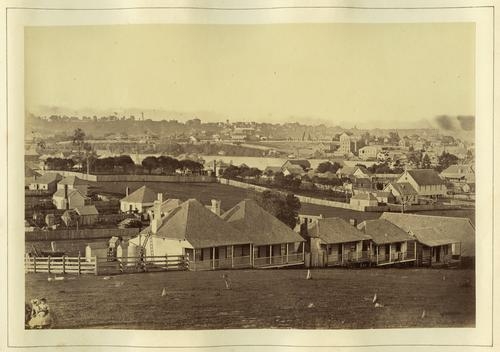
This photo shows a view from Merivale Street, South Brisbane ca. 1868, looking across Hope Street and Grey Street. The South Brisbane Congregational Church is in the right central view and the outlook is towards North Brisbane with temporary Victoria Bridge at he the left. (SLQ)
Unfortunately the church was submerged to the eaves during the Great Flood of Brisbane in February 1893. The severely damaged wooden structure was dismantled and rebuilt on the current site in Vulture Street, opening five months later on 23 July 1893. A hall was added in 1930.

On 16 October 1931 a fire totally destroyed the church, but fortunately the hall suffered only water and smoke damage.

The resilient congregation did not give up, but decided to build a bigger, more solid brick church and use the hall during the construction period.

The striking Gothic-style octagonal building, designed by prominent Brisbane architect T.B.F. Gargett, was dedicated on 9 September 1933. It served the Congregational community until 1975 when it was sold to the Serbian Orthodox congregation.
 The church has now been entered on the Brisbane Heritage Register in recognition of ‘the important role it has played in the lives of successive generations who have worshipped or met there’, and as an example of ‘the ecclesiastical work of prominent Brisbane architect, Thomas Brenan Femester Gargett.’ (SLQ/ /BCC Heritage Register/Trove articles).
The church has now been entered on the Brisbane Heritage Register in recognition of ‘the important role it has played in the lives of successive generations who have worshipped or met there’, and as an example of ‘the ecclesiastical work of prominent Brisbane architect, Thomas Brenan Femester Gargett.’ (SLQ/ /BCC Heritage Register/Trove articles).
Next: The pipe organ and its dedicated organist
St Mary’s Catholic Church
St Mary’s Chapel and St Mary’s School
Controversy- disagreements- disputes – rebellion – expulsion – St Mary’s Catholic Church at South Brisbane has a colourful and fascinating history!
Let’s start at the beginning:
The first Catholic Church in South Brisbane was St Mary’s Chapel, a small wooden building on the corner of Peel Street and Merivale Street. It was opened on 2 July 1865 by Bishop James Quinn, the first catholic Bishop of Brisbane and founder of the Catholic education system.

The chapel was built on land granted by the NSW government in 1859 before news of the separation of Queensland from NSW was generally known. (Queen Victoria signed the secession approval on 6 June 1859 but Qld was not officially proclaimed until 10 December that year).
From 2 April 1866 the chapel doubled up as a school during the week when the Sisters of Mercy opened St Mary’s School. However, they found the commute from their Mother House on the north side to South Brisbane too demanding, especially when the temporary bridge between north and south Brisbane had been washed away, so they gave up the school. (The Victoria Bridge, the first permanent bridge linking north and south Brisbane was not opened until June 1874).
In 1868 two aisles were added to the chapel, almost doubling it in size.
After the Sisters of Mercy left, the school was run by a lay teacher, Mary Teresa O’Meara, until mid January 1870 when the Josephite nuns, who specialised in providing Catholic education to children of the working class took over at the invitation of Bishop Quinn. Six sisters of St Joseph (including the foundress, Mary MacKillop who was to become Australia’s first Saint) taught at the school according to the Woods-MacKillop system of parish-based schools. The school had opened with 70 pupils and by October 1879, there were 190 children who attended regularly.
The Josephites opened three more schools that year, two in Brisbane and one in Maryborough and during the next decade they controlled over 15 schools in the diocese, teaching about half of all children in the Catholic system.
However, all was not smooth sailing. There was ongoing conflict between the sisters and Bishop Quinn over the administration of the schools. The Josephite system was based on administration being the responsibility of the sisters rather than the bishop of the diocese. Finally the bishop asked the sisters to leave his diocese – despite strong petitions by the parishioners for the sisters to remain, the bishop refused and in mid July 1880 the last of the Josephite sisters left Brisbane.
Part 2: The early days of the The New St Mary’s 1890 – 1925
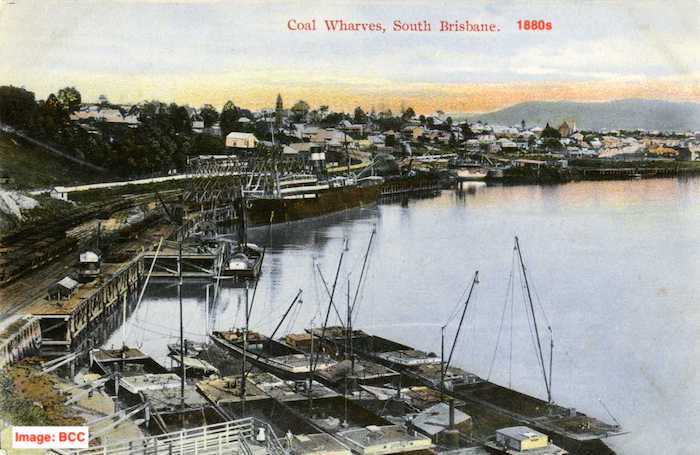 With the increasing population and an economic boom in Brisbane in the 1880s, even the enlarged chapel was not big enough for the ever-growing congregation. By 1890 the parish decided that a new church was needed, fundraising started and the project was fully supported by Father Dorrigan, the parish priest at the time.
With the increasing population and an economic boom in Brisbane in the 1880s, even the enlarged chapel was not big enough for the ever-growing congregation. By 1890 the parish decided that a new church was needed, fundraising started and the project was fully supported by Father Dorrigan, the parish priest at the time.

Designs for a brick building by architects George Simkin and John Ibler were accepted and Woollam and Norman were appointed builders. The church as designed showed a nave, with aisles and transepts and a chancel with a campanile (bell tower) at the northwest angle and was designed to accommodate 800. The style was a mixture of early Italian, Romanesque revival and the traditional model of the basilica, originally a type of Roman building adapted by early Christians for worship.
The foundation stone was laid by Cardinal Moran on 25 September 1892.
However, the early 1890s were difficult times with development slowing, maritime and pastoral strikes and collapse of the banks in 1893. On top of this, Brisbane experienced six floods in that decade, with the major one in February 1893. The Victoria Bridge was swept away and large areas of the southside were swamped.
 Despite these economic hardships the new church was opened on 2 July 1893 by Archbishop Dunne. Initially only the nave and aisles were built and the rendering of the bricks was left until more funds could be raised. The back of the church, with a recess for the high altar, which had been used at St Stephens Cathedral, and the rose window were temporarily built from timber.
Despite these economic hardships the new church was opened on 2 July 1893 by Archbishop Dunne. Initially only the nave and aisles were built and the rendering of the bricks was left until more funds could be raised. The back of the church, with a recess for the high altar, which had been used at St Stephens Cathedral, and the rose window were temporarily built from timber.
 There have been several major additions and renovations since the church was built.
There have been several major additions and renovations since the church was built.
A new sanctuary, including vestry and sacristy, was completed in 1929 and opened on 8 December 1929 by James Duhig, the third Archbishop of Brisbane. (to be completed)
South Brisbane Presbyterian Church
On 25 May 1851 the first Presbyterian Church in Queensland [then Moreton Bay Settlement] was opened by the Rev.Thomas Mowbray, who became known as the ‘Father’ of Presbyterianism in Queensland.
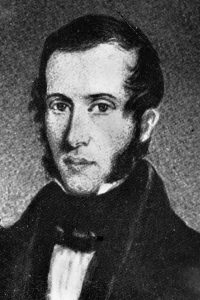
He was a Minister of the Established Church of Scotland who migrated in 1842 to NSW for health reasons. When his health deteriorated further he moved north to Moreton Bay, arriving in 1847. He bought eleven acres of riverfront land in what was then Kangaroo Point and in 1851 built a beautiful stone house called ‘Riversdale’, establishing the second ‘riverine estate’ in the colony (after Newstead House). The area is now Mowbray Park.
He became actively involved in establishing a Presbyterian Church as many of the Presbyterian Scots who had come out in 1849 on Dr Lang’s immigrant boats the Fortitude, Chaseley and the Lima no longer wanted to attend combined services with other denominations and wanted their own church.
After an initial planning meeting of prominent ‘Presbyters’ at his home in October 1849, a second meeting was held on 12 December at which a pioneer committee was formed to establish the Church. Chairman was D.C. McConnel of Cressbrook and Shafston House, Rev. Mowbray was secretary and members included Messrs. Boyland, Cairncross, Graham, Gray, Inglis, McIntyre, McLean, McNaught and Stewart. In February 1850 they bought a block of land in Grey Street, South Brisbane, in the names of McConnel, Mowbray, Cairncross, Gray and McIntyre and in March accepted a tender for £112 from John Graham to build a small wooden church on the site.
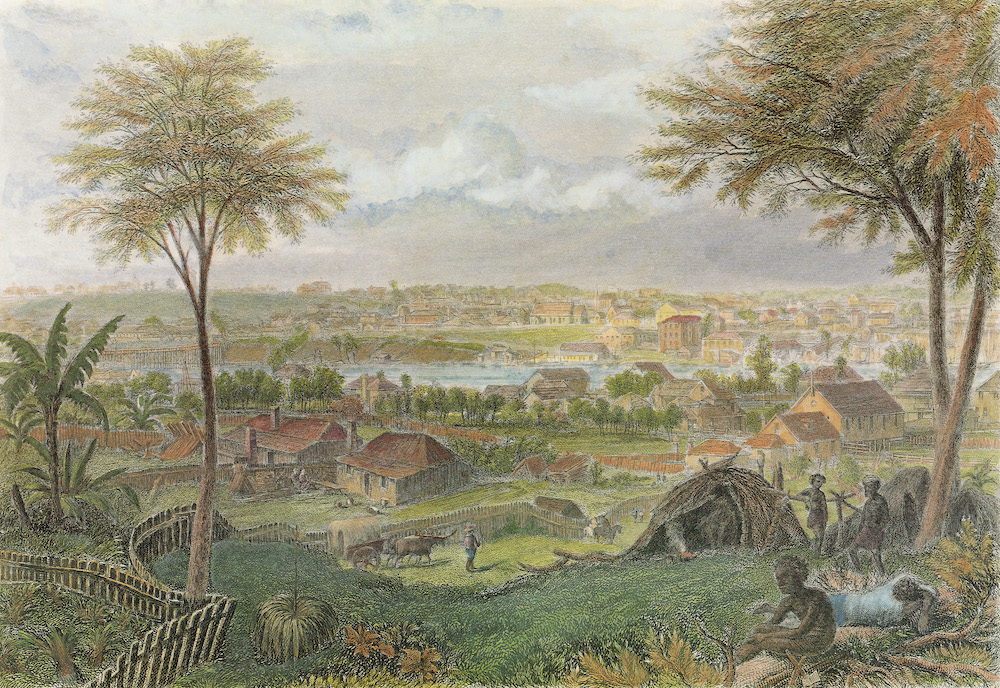
This view of Brisbane is from the southern part of the Expo 88 site on the South Bank of the Brisbane River. The right foreground depicts the Presbyterian Church built in 1851 in Grey Street, South Brisbane, which remained in use until the erection of the Park Presbyterian Church. (excerpt from description, State Library of Queensland)
The church was completed in early 1851 and officially opened by Rev. Mowbray on 25 May. He conducted the first service and continued until a permanent minister Rev. Walter Ross McLeod, was appointed in August. Soon evening services were also held on the north side in the School of Arts Building corner Queen and Creek Streets. However, due to increasing ill health Rev. McLeod returned to England a year later. Rev. Mowbray filled the gap until 1853 when the Rev. Sinclair arrived, but he only stayed for two years.
It was soon becoming clear that a church was needed on the north side. In February1854 land was bought in Ann Street and Rev. Charles Ogg appointed to look after both the south and north side. He considered the north side to be more suitable and encouraged south side members to worship there, which led to increasing tensions between the two groups. In May 1857 it was decided to divide the congregations. Some south side members moved to the north side and construction started on the Ann Street site. The new Ann Street Presbyterian Church was opened in 1858. On 21 December 1871 a fire almost destroyed the church, leaving only the stone walls. It was rebuilt the following year and has had many alterations and extensions since then.
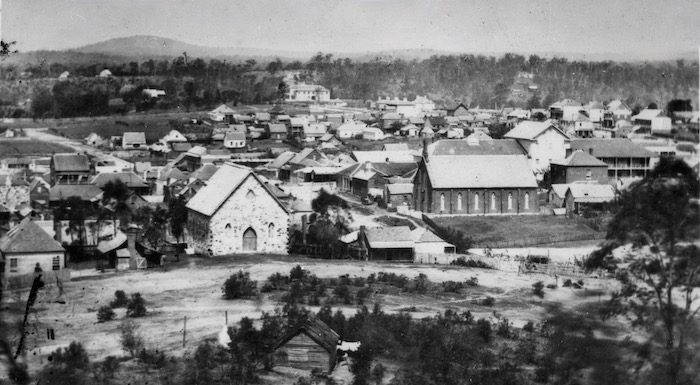
The South Brisbane Presbyterian Church in Glenelg Street, South Brisbane, ca. 1885. (State Library of Queensland)
Despite extensions and alterations the original church in Grey Street no longer met the needs of the growing congregation on the south side. In 1880 a block on the corner of Cordelia and Glenelg Streets opposite Musgrave Park was bought for £175 and a more substantial and attractive building planned.

The foundation stone was laid in October 1884 and on 11 October 1885 the South Brisbane Presbyterian Church, designed by Colonial Architect F.D.G. Stanley, was formally opened. It was later called the Park Presbyterian Church.
The old church building in Grey Street was sold to a private company and used for storage. It was demolished after the site was resumed for construction of the Melbourne Street Railway Station (now South Brisbane Railway Station) which opened in 1884. (Heritage Register/Trove articles)
